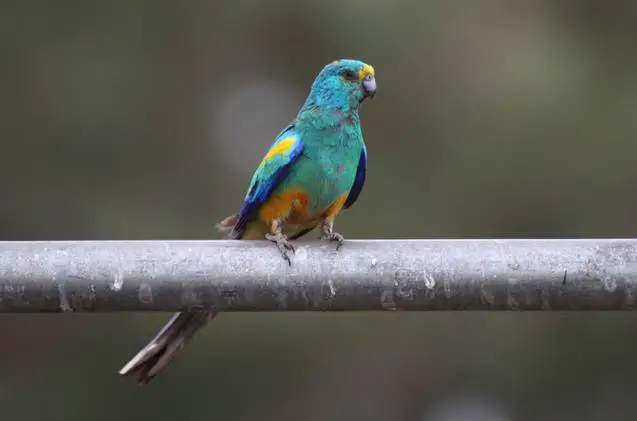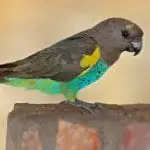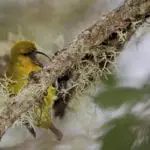Scientific Facts
| Scientific Name | Psephotellus varius |
| Common Name | Mulga Parrot |
| Life Span | 12 years |
| Size | 28 centimeters or 11 inches |
| Habitat | Shrub-lands and woodlands |
| Country of Origin | Australia |
Overview
Mulga Parrot or also known as a many-colored parrot, Parakeet, and Varied Parrot. Mulga comes from its favorite kind of vegetable, while its common name is from the male’s multi-color plumage. This bird easily catches your eye because of the beautiful, uncommon color of its feathers.
This one of a kind parrot has its sweet, serene personality and can be very plump with time. Its attractive looks, friendly behavior, and its little size make such a marvelous pet. They love the fame by just for themselves so be aware if they might not be friendly to other small size birds.
The different trademark of Mulga Parrot is its very long tail that almost longer than its whole body. Its tail was narrow and spear-like that reveal its slim shape. It is easy to differentiate male and female mulga parrot because they are a lot of differences. Aside from this, they are a distinctive parrot that shows a lot of unique tangible features.
These parrots include a small branch of the Australian parakeets family. They can also be seen along woody river banks and grasslands interior of Southern Australia. They’re commonly seen in groups and are quite confessing.
Description
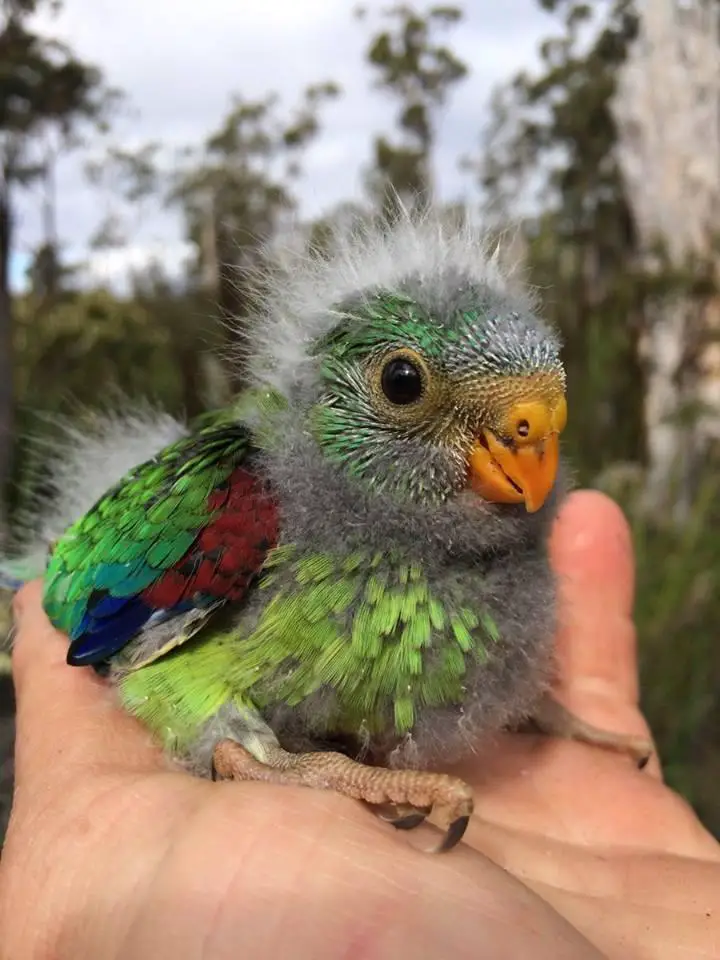
Image of female mulga parrot chick.
A full-grown female mulga parrot is dreary brownish-green with a red fleck on the tip of its head and its shoulders with a green rump. While a full-grown male mulga parrot is mainly emerald green in its color, it also has a yellow belt like beyond its lower forehead, a yellow mark on its shoulder, dim red marks on its tip and on its rump and with a red or sometimes orange-red area on the belly or its thighs.
On the edge of its wings, its color is dark blue, and its entire wings are blackish on their ends. These timid and beautiful birds are popular pets among hobbyists. Juvenile birds are comparable with a female mulga parrot. Its species is sexually dimorphic.
Mulga parrots light-colored feathers are its major appeal. Its magnificent mixes of complexion look fictitious and make mulga parrot a captivating appeal. These kinds of parrot commonly average about 27-28 cm or 10.8- 11 inches in length and weigh between 50 up to 70 grams or 1.75-2.5 oz. Immature birds usually have greatly tedious feathers than the adults, and they can be abandoned while still in the nest.
Native Region or Natural Habitat
Mulga parrots are usually seen in pairs and considered a non-threatened category. These kinds of birds are most commonly seen in the Australian continent and expand in the withered regions of the interior. These parrots are seen in New South Wales in between Victoria and South Australia. Mulga Parrots colonize in the dry forest of region, the shrubbery, and in the growth of mulga trees, which they derived its name.
The habitat of mulga parrot usually has a deck cover of low bush, samphire, spinifex, and chenopods. They slightly decrease in their population due to the quick clearance of the Eucalyptus forest.
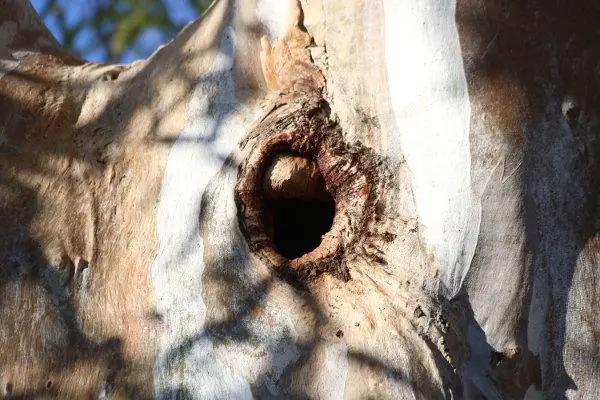
Mulga Parrot as Pets
In some cases, when you try to caress this bird, it will chirp quietly. When you provide enough space, they can be a good pet for an apartment setting. As time passes, mulga parrot will be mature a make a strong bond with you as its owner, particularly if you have it from its young age. They enjoy scratching and snuggling.
They have also an energetic side that loves to fly inside its house. Mulga parrots enjoy swinging in ladders and climb in ropes. They considered a great pet even most of the time they don’t want to share a space on their cage for the little parrots. But its sweet personality and loving behavior with a stunning look that makes them an ideal pet for single and also for a senior person.
These parrots love both dust or water bathing, they are known as avid chewers, so prepare an unsprayed flowering, bird-safe, pine, and willow branches also provide different sizes of pole for the foot exercise, some wooden toys, and sterilized pine cones.
Speech and It’s Sound
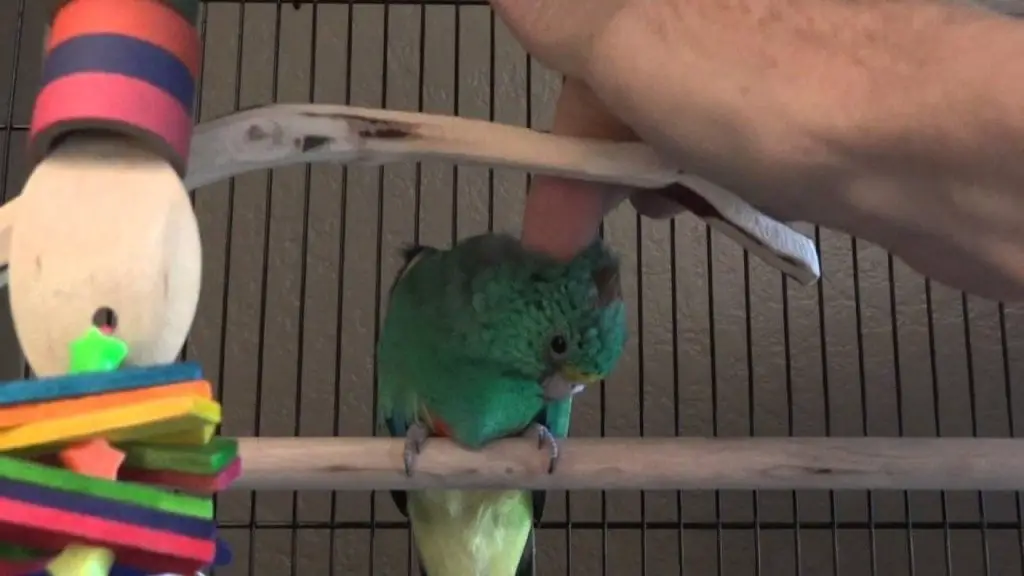
Mulga parrot answers vocally when they feel happy. They have natural calls contains soft warble, twittering, and also a melodic nattering. This kind of parrot is not too rowdy, and most of the owners will state that these parrots are pleased to hear. While they roost, musical talk can be heard.
Care and Feeding
A great choice for the stable diet of mulga parrots is a seed mix that contains oats, canary, and sunflower seeds. These parrots are known avid chewers, so provide parrot toys or untreated branches for this pet so they not chew any household items inside your house. It also thrives on eating a diversity kind of grass seeds, insects, or either fruit. Most of these parrots are feed in pairs or as a group that consists of parents and young parrot. Consistent baths are needed.
Diet
Mulga Parrot’s diet is generally a high-quality small seed mix, its not that tough to feed them right, but some birds are likely to become obese if you don’t watch out. You may give them a high standard pellet, but if the bird refuses to eat it, prepare a high-quality multi-grain instead. When the parrot is overweight, sunflower or high-fat seed should be restricted to be given in your pet. You may also store a chopped salad that contains seasonal fruits and vegetables. Most breeders blend some wheat seed oil. Milky seeding grasses must be recommended routinely.
Sometimes female mulga parrot places an over-sized grip that straining their bodies. Consult to your vet about when to give a portion of food that has calcium and other supplements, but keep on mind that calcium is not easily absorbed without access to natural sunlight. You also need to provide richer food, especially when breeding seasons like bird breeder’s mix.
Breeding
Mulga Parrots roost in a vacant tree, generally in eucalyptus or frequently in near water areas, but sometimes they also use other trees or even in holes in sandbanks. Female mulga parrot executes all the incubating processes, but when feeding the chicks, both its parent need to help their little chicks.
Breeding usually does during the month of August – December, but it depends upon a good rainfall. They normally become sexually mature and competent to breed is at their 12 to 15 months of age. Mulga parrots are generally clutching a four to six white rounded eggs with the size of (25mm x 19mm), its incubation period usually lasts up to 19 days. A young parrot normally matures at around 28 days and stays with its parents up to the following breeding season.
Health and Common Conditions
Mulga Parrot has the ability to easily adapt; they frequently inhabit in some of Australia’s driest and dreary regions that make them healthy and strong pets. Its most needs are sufficient space, social interaction, and the most important thing is its balanced diet. Consider that this kind of parrot is a very fast flier, so you need to monitor it to minimize any trouble around the house.
Housing
In a large cage, breeding birds should be kept in pairs, almost certainly large enough to walk into. A powder-coated metal birdcage needs to be a large one, that cage at least have a minimum size of 24”w by 18”d by 24”h. You also need to provide a play gym for a parrot to chew items and assorted toys. It’s rare to have your own single mulga parrot, but when you have one, be knowledgeable about your bird’s need, especially to exercise to prevent birds’ obesity, aggression, and boredom.
Mulga parrot is a territorial bird with regard to other parrots; they don’t want to share their cage, among others,most especially to a little parrot that is smaller to its size. Most mulga parrot loves to bathe with clean sand or in water, so you need to provide a proper surface of sand or dirt to allow them to play into. When making a bird sanctuary, keep in mind that this sun-loving type of bird doesn’t allow being cold and moist.
Species Certain Problems
Mulga Parrots is prone to become overweight when you kept them in a small aviary. A good remedy for this is to get rid of the large part of the oily seeds that they usually eat from their diets, such as the sunflower and safflower.
Mulga parrots usually spend their time feeding in the ground that might be a cause of high risk from fungal infections or either intestinal worms. Just maintain high standard hygiene is the best remedy to prevent these infections.
Courtship Display
Similar to a Red-rumped Parrot, a mulga cock patch up on a perch, and it often stretches to his full height. It pushes its shoulders further to let out the blue and its yellow markings; they also fan its tail and wags it from each side. This usually goes along with a greatly head tossing and then followed with a courtship feeding (regurgitation).
Mutations and Hybrids
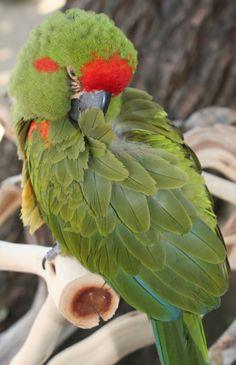
The mulga parrots have crossbred with a Red-rumped, Hooded, bluebonnet, and Golden-shouldered parrots. The variation of this species is a formation with a bluish shade and a light-colored red rump.
Ecology and Behavior
These birds feed and drink in the morning and evening; they usually rest during the hottest part of the day. Mulgas are equitably trained when feeding, but they are flying up to a treetop when they got disturbed. They are easily frightened by a loud noise; this is the reason why they did not do well in an active household.
Mulga Parrots are in chastity, and in captivity parrots that match up when they are still young are further victorious breeders. In one instance, when the copulate of two pairs was trade, the males called ceaseless to its old partner, who were in closest cages and usually ignored the newly introduced females.
Nesting
If there is enough space, you may offer a choice of sizes or types of logs or even nest-boxes in the birds and placed each nest-box in different locations within the aviary; this can allow the parent birds to make their own choice. Usually, a parent bird’s desire can be affected by the size or type of nest-box or log in which the bird can hatch and nurtured.
Once the pair has finally chosen a particular nest-box to give that one to them, and they can use it every breeding season. Keep that nest-box as for their exclusive use. When those “spare” boxes are about to detach, make sure that this log or nest-box is cleaned to secure that the box has the least possible contamination of mites, pathogens, and even parasites.
Here are some guidelines for the Mulga Parrot nesting box.
- Nesting months- August to December
- Log- Length: 300 – 500 mm (or approx. 12 – 18 inches
- Log Internal Diameter: approx. 150 – 180 mm. (or approx. 6 – 7 inches)
- Nest-box- internal dimensions approximately 150 – 180mm x 150 – 180 mm square (or approx. 6 – 7 x 6 – 7 inches square)
- Width of its entrance hole- approx. 55 – 65 mm ( or approx. 2.2 -2.5 inches)
- Checking Hole (square or round) 100mm (or approx. 4 inches)
- Removable lid – can be functional to an entry point for cleaning.
- Location and Height of Nest-box – in a shaded part of the bird sanctuary at about 1.5 – 1.8 meters height, but not too direct to the roof to prevent heat problems in hotter season.
- Nest-box Angle – 45 degrees through to vertical.
- Nest-box material / Nesting log – degrade non-toxic saw dust, wood residue, or other applicable materials.
- Who incubates the eggs – hen, cock, or both share.
Wooden nest-box normally needs a climbing form to connect inside the box below its entrance hole. Both of the logs and nest require an entrance opening or hole of about 55 – 65 mm diameter and about 100 mm (about 4 inches) from the top. Almost all species of parrots want the entrance opening to be big enough for them to squeeze through.
Availability: Where to Get One?
For those possible pet owners of Mulga Parrot, this bird is for sale on bird dealers if not try to check online for some websites that sell parrots.
Predator
Mulga parrots are usually at risk to predators such as stray cat or fox because most parrots spend their time searching for seeds.
The seeds that parrot loves to eat do not contain a large amount of moisture, so mulga parrots used to drink habitually to a nearby water source like water holes; this makes them unsafe for aerial predators like falcons or either goshawk who frequently hunt throughout water holes. A baby mulga parrot is also at high risk to predation in its little tree hollows from a middle-sized goanna, also known as monitor lizard.
How to Care
How do you cure a fungal infection in your parrots?
There are options of treatment for fungal infections of birds these include clotrimazole, fluconazole, itraconazole, terbinafine, enilconazole, and the amphotericin B. But when you feel that your pet has generated a bacterial or fungal infection, the best way to do is to take it to the veterinarian as soon as possible.
How to treat a sick parrot
It is quite alarming if your pet feels sick. The following are the things to remember when your bird is not feeling well.
- The first and foremost thing to do is isolate the sick parrot from other birds.
- A sick bird needs to feel warm, try to use a heating pad, a brooder, or anything that you can use to make your bird warm.
- Some birds don’t show any sign that they are sick until it is well sick. They are aware of hiding any illness away from their group so that they won’t be prohibited from their group.
- Also, keep the birds apart from smoke or any fire so that they cannot get the smoke out of their lungs.
- Visit its veterinarian or an avian vet to diagnose its illness. There is nothing that can beat the intelligence and knowledge of an avian vet regarding this matter. It is the best way to save the lives of your sick parrot.
FAQ Section
Is a Mulga Parrot a good pet bird?
Yes. It’s a spectacular Australian grass parakeet that’s a highly regarded bird which also makes a good pet bird due to its beautiful plumage.
Do Mulga parrots speak clearly?
Aside from their sweet voices, parrots can learn how to speak or pronounce words with exceptional clarity. They are naturally intelligent that love being the center of everyone’s attention.
Do parrots really understand what they’re saying?
According to animal behaviorists, most parrots can understand what they say because they are intelligent and with amazing learning abilities.
How do you distinguish a Mulga parrot from other parrots?
Mulga parrots have a red patch on their abdomen with brightly colored feathers.

